To take good care of your Chinese hamster, you’ll need to keep it in a large enclosure of at least 450 square inches, bedded with at least 12 inches of bedding and nesting material, and equipped with all the necessities it will need. Finally, a healthy diet and regular vet check-ups, because they are prone to wet tail and diabetes.
What to know about Chinese pet hamsters?
The Chinese hamster(Cricetus griseus), is a small rodent native to Mongolia and the north-eastern China steppes and desert edges from which it takes its name, wrongly known as the striped hamster, but this one is just a subspecies of the Chinese hamsters.
These hamsters are part of the rat-like family of hamsters; have been domesticated since 1919, mainly by laboratories and universities in the UK, but they were soon replaced by mice and pet lovers quickly fell under their spell in the 70s, finding their way into our homes as pets.
Even though Chinese hamsters are not a Dwarf species, these hamsters are often called:
Dwarf Chinese hamsters
Chinese Dwarf Hamsters.
Asian Hamsters as well.
- What to know about Chinese pet hamsters?
- Chinese hamsters Temperament
- How to choose your Pet Chinese hamster?
- Housing a pet Chinese hamster
- Chinese hamster Specific Needs
- Feeding a Chinese Hamster
- Common Chinese Hamster Health Issues.
- Taming your Chinese Hamster
- Cost of keeping a Chinese hamster
- Where to get a Chinese Hamster
- Breeding Chinese hamsters
- Final thoughts
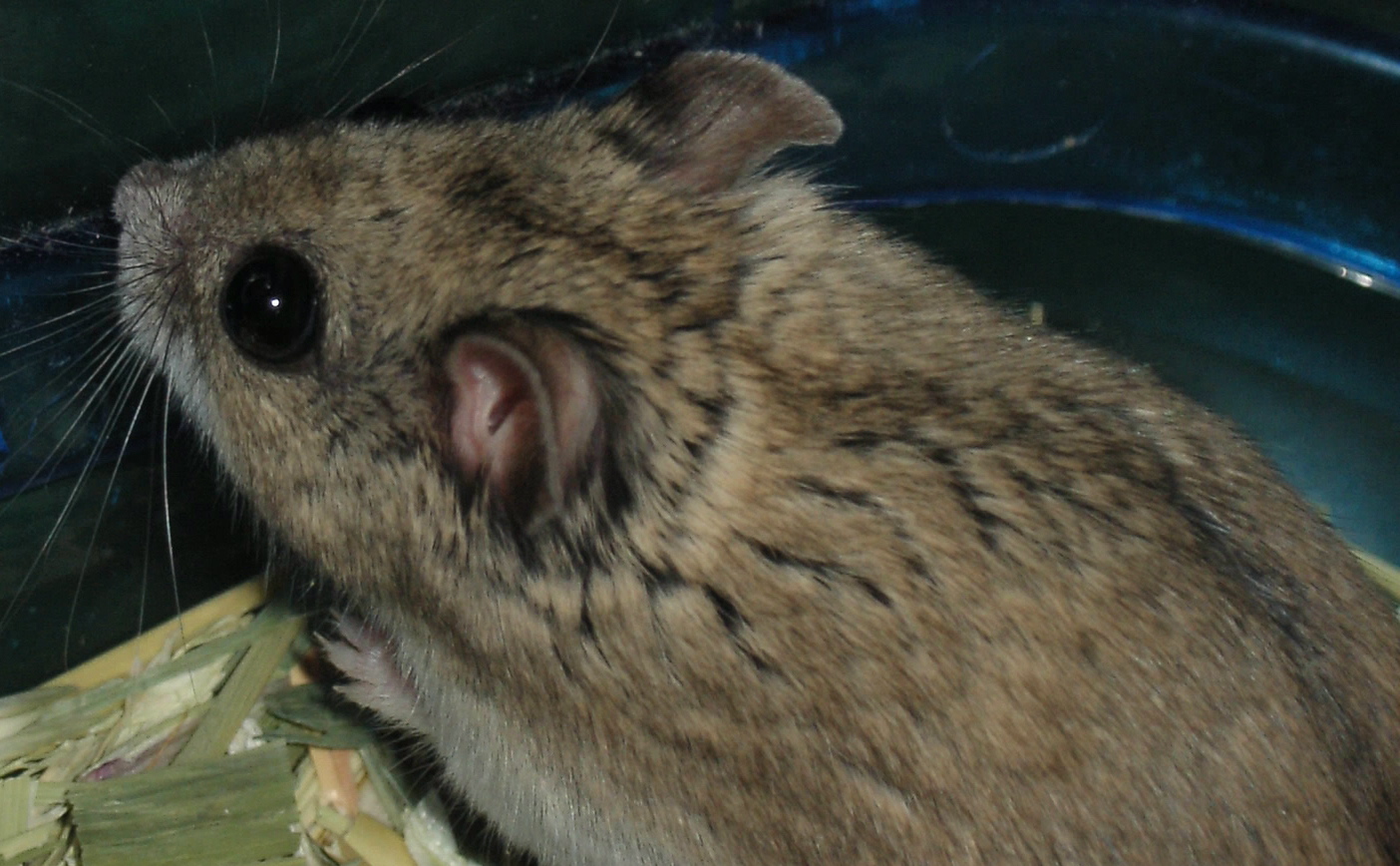
Chinese hamster characteristics
Chinese hamsters are not part of the “dwarf hamster” family, but the word “dwarf” is sometimes added just because of their small size, and their temperament is a little different from that of dwarf hamsters: they’re less tolerant of their congeners living in the same enclosure, especially when they reach adulthood.
Chinese hamsters come in three main colors:
- The Spotted-white.
- The wild color
- The black-eyed white.

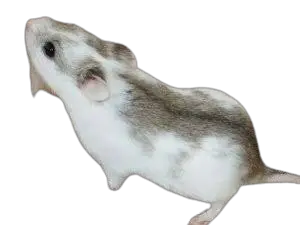
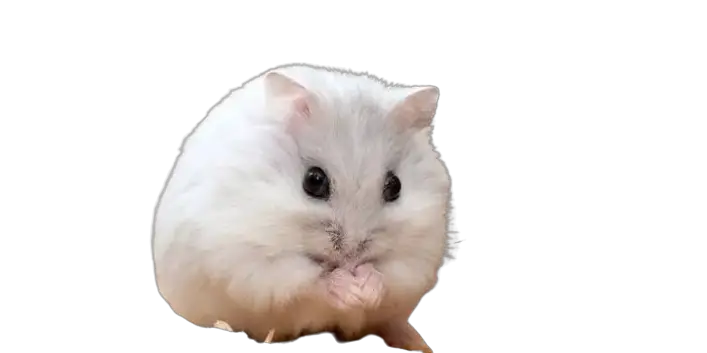
As pets, they are usually brown with a black stripe all along their spine, and a whitish belly. There are other variations like grayish-white all over, with a dark stripe on their back.
What distinguishes it physically from The Roborovski and the dwarf hamsters is its slightly longer tail, especially in males, which can reach more than 1 inch (30 mm). Chinese hamsters can reach a length of over 5 inches and weigh 45 gr.
Chinese hamsters have a longer lifespan than other hamsters, averaging between 2 and 3 years, although they have lived for almost 4 years. Females are the most popular pets, while males are often kept by breeders to perpetuate the species.
Chinese hamsters Temperament

Do Chinese hamsters make good pets? Absolutely, they’re easy to care for and tame and can be a little shy and timid at first, but they’ll soon recognize you and start showing off in your presence.
Like all hamsters, Chinese hamsters are nocturnal and solitary animals that don’t tolerate other hamsters in their enclosure.
Later on, he’ll also start to show up during the day between his many naps, to drink a little water or nibble a few seeds.
Don’t worry if at first, your Chinese hamster is a little nippy, nervy, and fast-moving, and it’s during this period that you need to be careful he doesn’t jump out of your hands.
But he’ll soon stop biting you and let you hold him easily, and as he gets older he’ll become calmer, gentler, and more adorable, surprising you with his tenderness, especially when he clings to your finger with all his cute paws.
How to choose your Pet Chinese hamster?
I recommend that you find an ethical breeder so that you can get a healthy Chinese hamster, without any hereditary diseases and usually already tamed.
If you mix the two genders, the females will nibble the males’ tails and genitals.
Housing a pet Chinese hamster
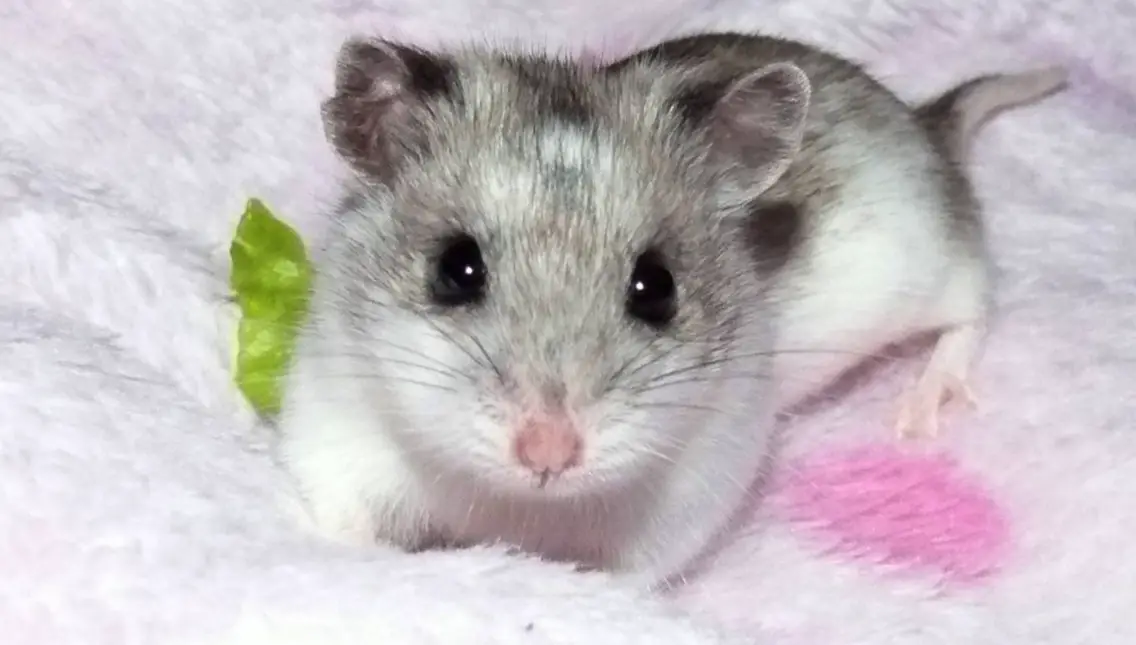
Picture of Spotted-White Chinese Dwarf hamster
I often recommend a large enclosure like IKEA Detolf , 64″X17″X14″ (1024 square inches placed on its side but you’re gonna need to secure it with a lid especially for Syrian hamsters) even for dwarf hamsters. Chinese hamsters are solitary animals, but they also need lots of room to play. also, provide areas of low light within the enclosure.
A large enclosure of at least 800 square inch (unbroken floor space); will also enable him to dig his own network of tunnels and especially to dig up to 3 entrances so that he feels secure, which will also reduce his stress level and prevent many health problems. They also don’t need light at night, so don’t bother them with all those fancy lights you see on Youtube.
If you can add more than 15 inches of bedding, he/she’ll be able to create her own nesting chamber, the food storage ones.
You’ll also need this space to put all the items your hamster needs and some enrichment as well. 100X50X50 cm is the minimum until you get him a larger enclosure, here’s why!
If you want to have two or 3 Chinese dw
amsters, ask the breeder to choose them for you from the same littermates and they should all be of the same gender, preferably males, but like Syrian hamsters, Chinese hamsters prefer to live alone in their enclosure.
Hamsters are notorious for their tendency to escape, they’re very intelligent, and their cage should preferably be made of glass and wood, you can leave the top of the enclosure open if it’s high enough.
Like the winter white dwarf hamsters and the other hamsters, Chinese hamsters have poor eyesight but a highly developed sense of hearing and smell, so avoid exposing them to loud noises and strong odors.
Chinese hamster Specific Needs
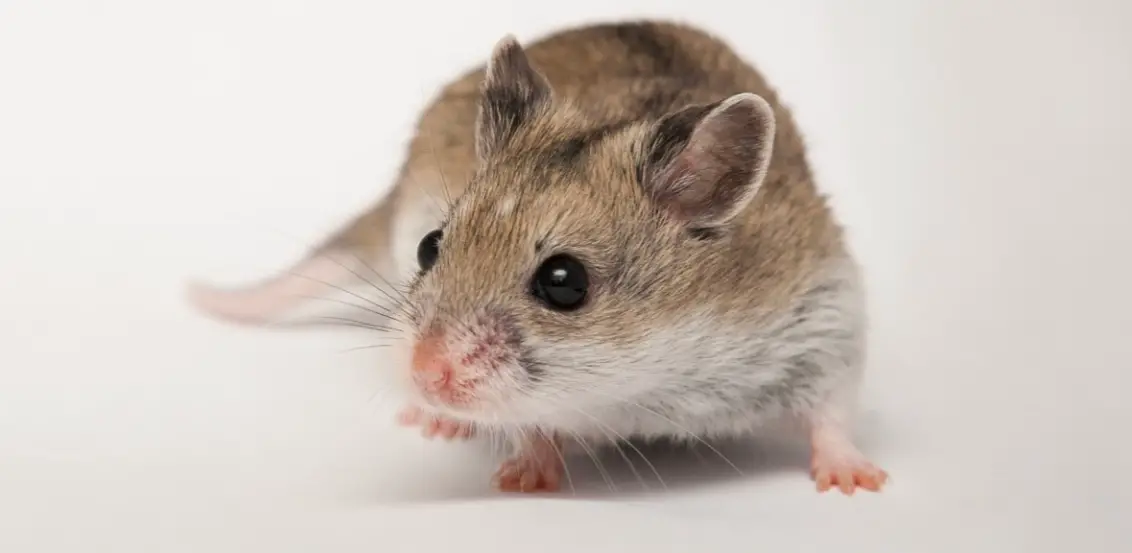
Picture of Wild type normal Chinese Dwarf hamster
The ideal temperature for a Chinese hamster ranges from 68 to 76°F (20-24°C) and the relative humidity from 40% to 65%. These hamsters will need a special care in cold weather, because If temperatures drop in the enclosure down to around 40°F (from 16°C to 5°C), with shorter daylights, your Chinese hamster may go into torpor until the air warms up, usually lasting only an hour or two.
Chinese hamsters have almost the exact needs as other types of pet hamsters, a large enclosure with thick paper-based bedding or Aspen so they can create their tunnels and galleries, water and food, a wheel for exercise, some hides, tunnels, platforms, ladder, bridges, sandbox, chew toys, and enrichment.
Feeding a Chinese Hamster
In their natural environment, Chinese hamsters don’t find much to eat, feeding mainly on young shoots and seeds, and may hunt a few insects for protein.
Pet Chinese hamsters have the same diet as other hamsters, 10 to 15 gr of food per day, a good mix rich in seeds, grain, nuts, and some good pellets.
They also like mealworms and crickets. Hamsters also may need a vitamin and mineral supplement alongside their usual commercial food, not forgetting a daily intake of fresh veggies, hay, and the occasional piece of fruit just as a treat (not the sweet ones).
They should always have access to fresh, clean water, especially in hot weather and should be provided with one or preferably two water bottles in case one stops working.
TIP: food, sprays, gnawing objects, and water should be put at one end of the enclosure, leaving the remaining space free for your hamster to choose its toilet spot.
Common Chinese Hamster Health Issues.
Chinese hamsters get diabetes easily, so they need plenty of exercise, but above all avoid giving them too sugary fruit. You’ll also need to learn how to detect signs of illness before they become serious, especially as hamsters tend to hide their diseases (survival behavior).
Illnesses common to all hamsters include Colds, constipation, wet tail which can be fatal if not treated in time, like diarrhea, probable respiratory problems which you’ll detect if your hamster has a runny nose and frequent sneezing and they can sometimes have heart problems (congestive heart failure), some Lumps and Bumps or some intestinal infections.
But most of these problems are caused by poor diet, poor hygiene, poor aeration, and, above all, stress, which is behind almost all hamster problems.
Finally, It’s always a good thing if from time to time you take your hamster for a little routine check-up at the vet’s to make sure everything’s going well for him.
Exercising your Chinese hamster
Speaking of stress, the best way to help your hamster relax is to get it an exercise wheel, a free-standing one that matches its size, at least 6.5 inches in diameter to avoid spinal problems; preferably silent; Avoid wheels that have holes or gaps on the running surface but with a smooth running surface, something like Kaytee Silent Spinner Wheel.
Cleaning and Grooming Chinese Hamsters
Hamsters are generally very clean animals who take good care of their fur, they’re grooming themselves and love sand baths to clean their fur and remove excess oil from their coats.
All you can do is keep their cage, bedding, and sandbox clean. Their bedding should always remain clean. Hamsters should never get wet, and if they do get their fur dirty, which can happen when they’re sick and overdo their daily grooming, you can just wet a towel, wring it out and run it gently over the dirty back of their fur to clean it up. Never wait until the bed smell comes from his enclosure!
You should only carry out spot cleanings only (the removal of soiled bedding) to avoid completely removing the scent and territory markings that your hamster may have placed all over his cage, and to avoid stressing him.
Hamsters rely heavily on their sense of smell to read their surroundings, so avoid introducing into the enclosure any object or bedding that has a strong odor.
When the cage is completely cleaned, put back some of the old nesting material.
Taming your Chinese Hamster
Taming a hamster is training it to get used to you and to trust you, other members of your family, and even your other pets from afar.
Chinese hamsters are small, quick, and fearful at first, so you’ll need to be very patient at first, letting it get used to your presence, and letting it come to you before starting the taming process.
Cost of keeping a Chinese hamster
Hamsters will cost you around $500 to $600 a year, so you should budget at least $250 when you’re getting ready to have one, especially to buy a good Ikea Detolf enclosure ($130), two bowls, two water bottles, bedding, hidings, sandbox, tunnels … and food of course (I recommend you prepare your own hamster’s seed Mix). Monthly fees will be between $20 and $50 just to get some chew toys and the other enrichment you can get yourself in the wild of course.
I advise you to properly house and feed your hamster to avoid veterinary fees in case of illness, which can be really spicy!
Where to get a Chinese Hamster
You should absolutely know how to choose a hamster, that’s why I often advise my dear readers not to buy their pets in pet stores, and this is especially true when it comes to hamsters: you’ll need to do everything you can to find a breeder who is passionate about hamsters, always look for an ethical breeder who specializes in hamsters, check out the Facebook groups in your state or region and contact them.
Most hamsters you find in malls and pet stores usually have health problems, are predisposed to disease, are rarely purebred, and, on top of that, often have behavioral problems as they are poorly raised in inhumane pens in Rodent Mills.
Breeding Chinese hamsters
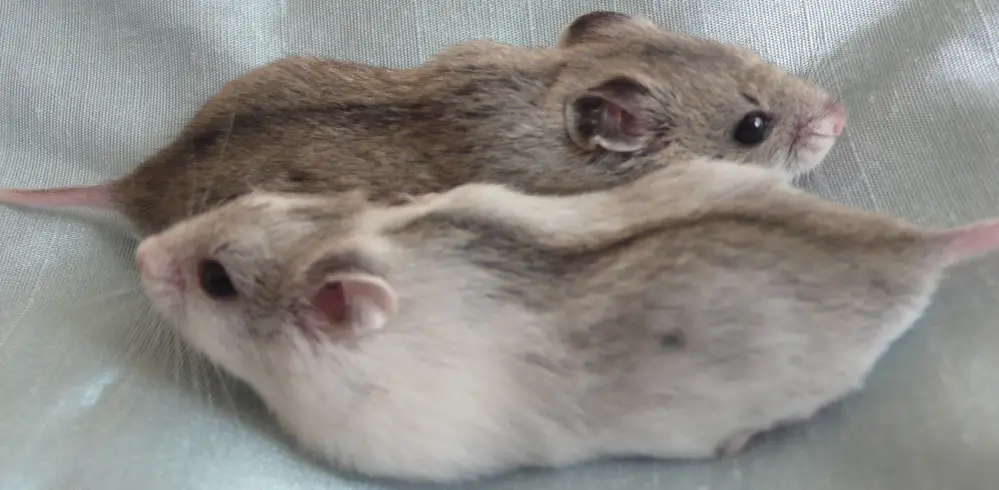
Breeding Chinese hamsters isn’t easy, and unlike Campbell’s dwarf hamsters; Chinese hamsters are known to be very slow to mate compared with other hamster species, and I recommend that you get some knowledge about this topic before considering breeding Chinese hamsters, because pregnant and nursing hamsters will need a very special care.
Final thoughts
Finally, Chinese hamsters are adorable and easy to take care of, and if you house them well, feed them well, and give them a little love, they’ll live long and healthy lives and will of course return your love and let you play with them and no doubt become your new favorite friends.
One last piece of advice, don’t try to save money when you’re housing and feeding your hamster, if you do that, you’ll save less than $100 but your hamster will live miserably in a small cage, eating junk food that’s cheap on Amazon and will either die too young or make you regret your choice by making you pay for your mistake at the vet.


